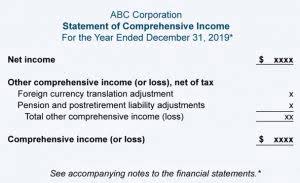
Hence, they must be included in our calculation with direct labor costs. These costs include direct material and direct labor required to complete the work. Direct materials are the primary building blocks that form the basic makeup of each unit of end products.

These costs are vital in helping companies generate revenues and make profits. One of the essential items for those companies includes raw materials, which contribute to a significant portion of the overall expenses. The wages, salaries, benefits, bonuses, insurance, etc. paid to these workers are direct labor costs.
Omit ‘Indirect’ Costs
It includes the direct labour costs and the amount spent on indirect factors like electricity bills, factory rent, etc., which cannot be directly traced down to the production of a single unit. Conversion costs are beneficial, especially for manufacturing businesses which have to deal with conversion on a large scale daily. They help the company to take important financial decisions and help them to bring efficiency to the production system. Generally, a business is looked upon as developing and selling products and earning profits. The raw materials required for the product are transformed through specific processes, and finally, products are developed for sale in the market. The expenses involved in this transformation are known as the conversion cost of a product.
- In addition, a firm may be required to compute conversion expenses to estimate its cost of sales for income statement reporting.
- Let’s assume that the organization has produced 2,500 units of a product in the first quarter of FY2020.
- For this reason, it’s a more relevant number for operations managers, who may be looking at ways to reduce the indirect expenses of production.
- In other words, conversion costs are costs incurred by a manufacturer other than the cost of direct materials.
- He is also an educational consultant who coaches students to equip with relevant knowledge on entrepreneurship and helps them to set up small-scale and freelance businesses.
Thus, each cost concept provides a somewhat different view of the costs incurred to create products. In a processing environment, there are two concepts important to determining the cost of products produced. As you have learned, equivalent units are the number of units that would have been produced if one unit was completed before starting a second unit. For example, four units that are one-fourth finished would equal one equivalent unit.
What Does Markup of Cost Mean?
From the definition, the conversion cost is a term used to refer to the costs incurred by a company while converting raw materials into furnished products that are up for sale in the market. Conversion costs include labour, raw material, machinery, etc, and other manufacturing overheads in the product’s manufacturing. In short, it is the cost of a product incurred by a company while manufacturing it. Conversion costs are a cost accounting phrase that refers to the sum of direct labor costs and manufacturing overhead costs. In other words, conversion costs are costs incurred by a manufacturer other than the cost of direct materials. Conversion costs include direct labor expenses and manufacturing overhead costs that are required to transform direct materials into finished goods.

The pay, wages, or perks provided to an employee who works on the completion of all final items are considered direct labor costs. Prime costs are frequently calculated using compensation provided to machinists, painters, or welders. Prime costs, unlike conversion costs, do not contain any indirect costs.
CONVERSION COST: Definition, Formula, and Calculations
Some costs, notably labor, are included in each, so adding them together would overstate manufacturing cost. This refers to the costs that may be directly attributed to each unit of product or process. These include things like electricity costs, rent, depreciation, plant insurance, plant repairs and maintenance, and so conversion cost formula on. Once you assess conversion costs, you can also use that information to see which campaigns need more work. Maybe one of your campaigns has a high conversion cost, but your team feels that it has a great deal of potential. You could use that information as an inspiration to make changes and see if you can improve it.

Conversion costs may also be used to build market-based pricing models for items and to estimate the final worth of finished goods. It is rudimentary to gauge the value of closing inventory since it is a line item reported on both the income statement and the company’s balance sheet. Average acceleration is the object’s change in speed for a specific given time period.

